Meet the five breakthrough designers who dominated at Transatlantic Fashion Week
From Danish lego inspiration and heat sensitive fabrics to reflective foil dresses and golden ratios, these five young graduates and fashion designers of the future talk us through their innovative new collections...

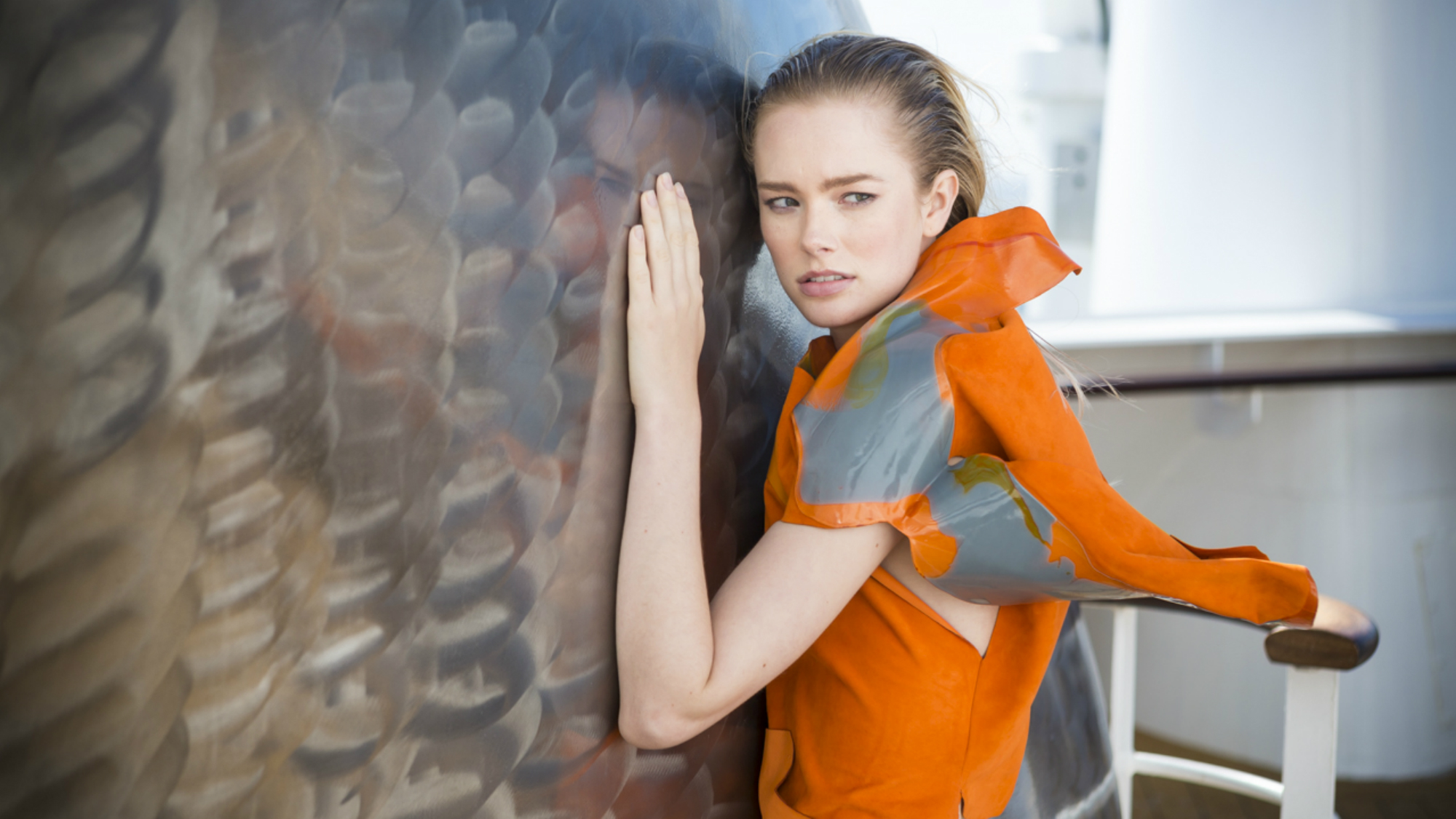
From Danish lego inspiration and heat sensitive fabrics to reflective foil dresses and golden ratios, these five young graduates and fashion designers of the future talk us through their innovative new collections...
September saw the first ever Transatlantic Fashion Week: a seven-day sea voyage aboard the Queen Mary 2: Cunard’s luxury flagship cruise liner, setting sail from Southampton harbour and arriving into New York a week later.
The fashion week was the very first to ever take place at sea, boasting passengers from journalists and bloggers to fashion historians and influencers, all gathering to celebrate SS17 fashion. The transatlantic crossing featured fashion lectures, launches (the dreamy Aspinal London Pegasus collection anyone?) and of course runway shows by legendary designer Zandra Rhodes.
The real stars of the voyage however were five Royal College of Art graduates who were selected to showcase their collections onboard. Spoiler alert: they’re pretty amazing.
We caught up with the innovative designers to talk through their collections and hear their plans for the future…
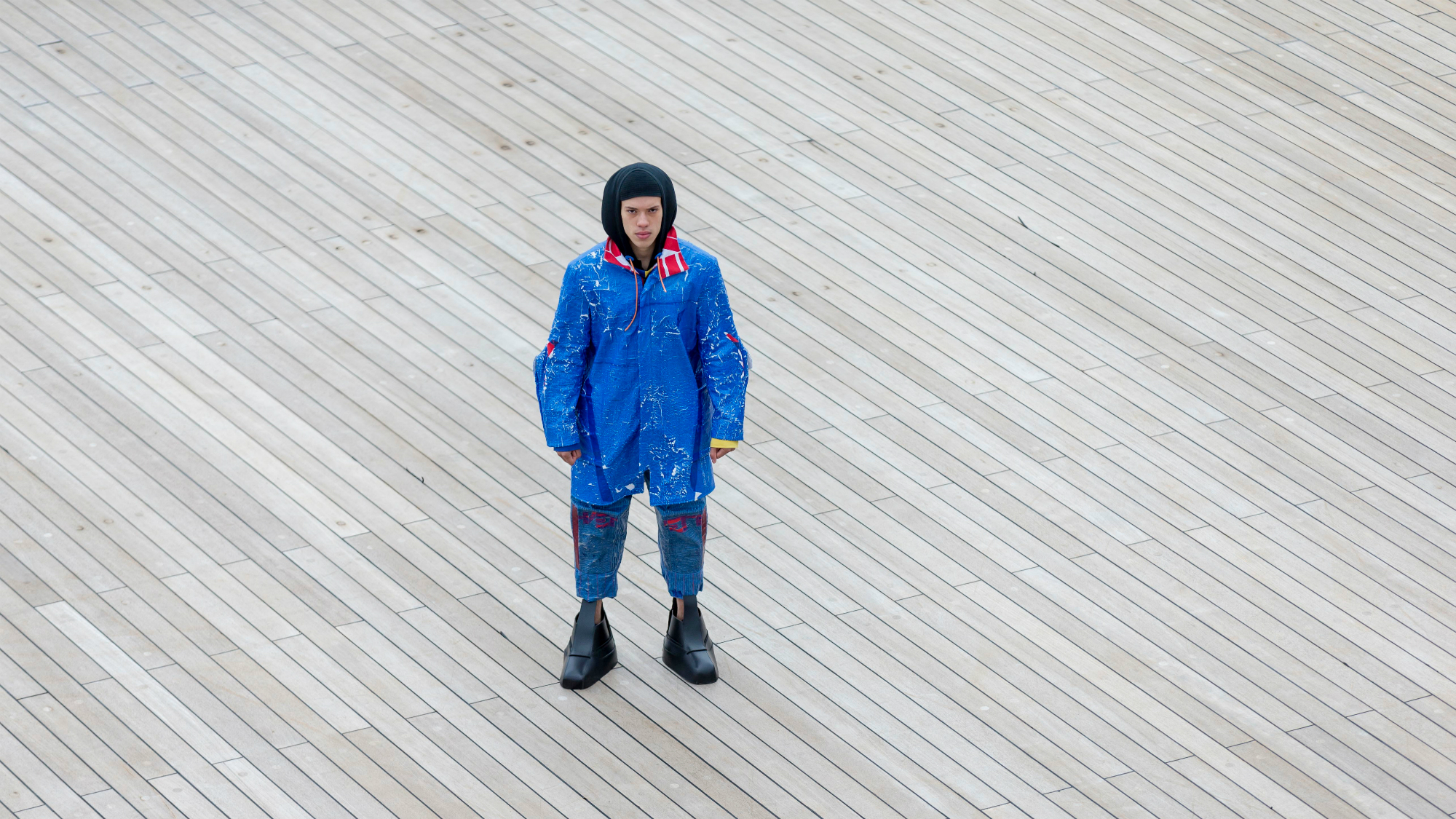
NIELS GUNDTOFT HANSEN
‘My collection was inspired by growing up in Denmark. It reflects my personal view of what it means to be a Danish kid. Denmark is very grim and cold – super raw and isolated, but at the same time it’s extremely colourful - everybody makes a good way of living and we have this trademark of being the happiest people on earth. It’s all about finding the perfect balance. I wanted to find the balance between the raw edge and romantic beauty of Denmark. The fabrics are tactile and raw: stone rubber and heat-pressed tarpaulin, and the colours are very childlike: baby blues, reds and yellows. I want to make the Lego version of raw Danish fashion. Lego is Danish and super simple, that’s what I wanted to do with my collection - I wanted to tell my story in the simplest way possible and for my work to be easy to understand.
Celebrity news, beauty, fashion advice, and fascinating features, delivered straight to your inbox!
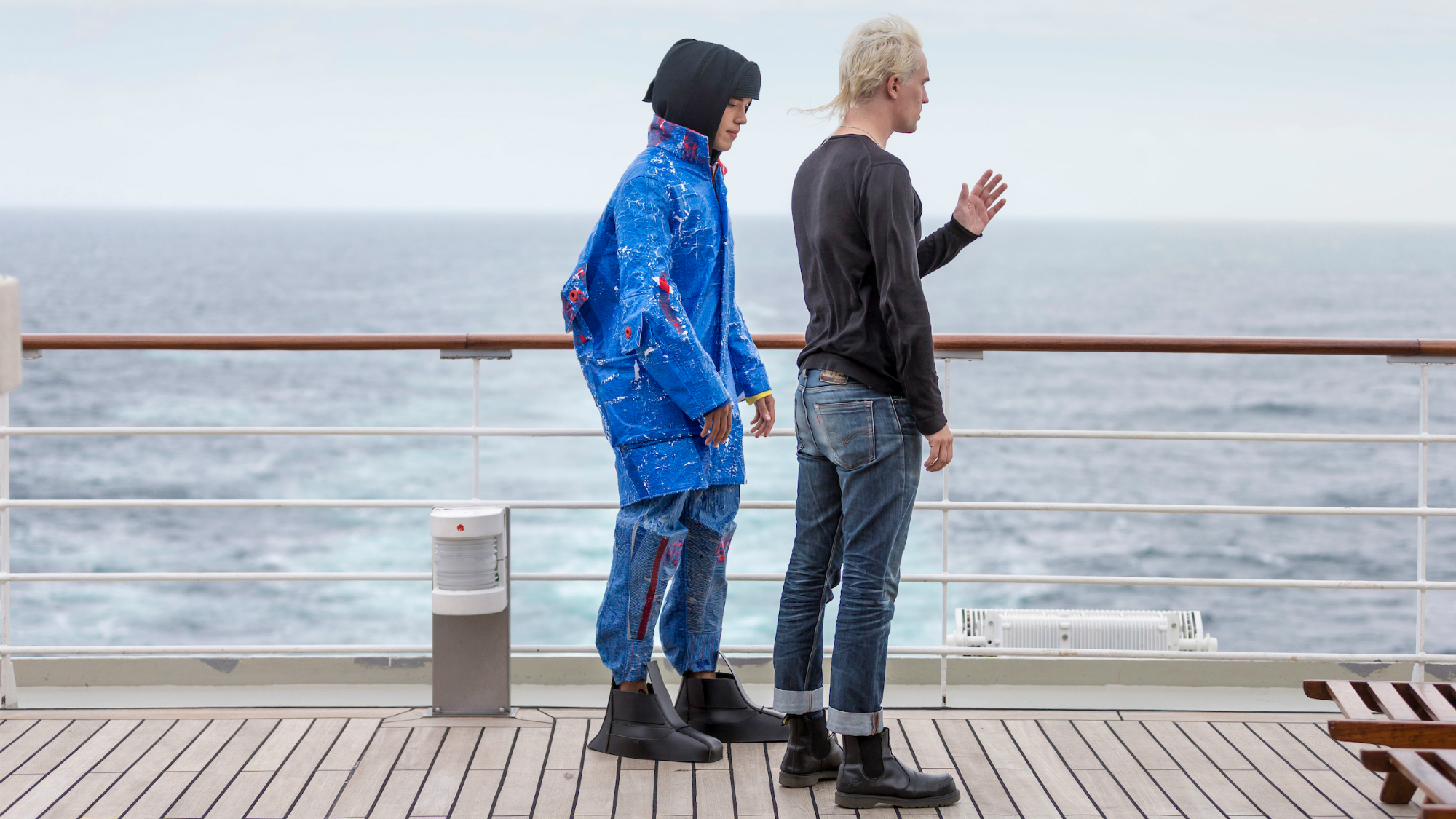
The biggest challenge? Making the patterns and finding the right fabrics. My designs are very structured and they need to keep their shape without collapsing – something that is actually really hard to do. It was so tricky and time-consuming finding the right fabric to maintain that balance. I completely stumbled into fashion design. I used to want to become a rock star. I had a record contract and a debut album but there was still uncertainty there. I did a marketing course but after six months I changed to pursue fashion, realizing how much I liked to draw and work with fabrics. I have just got a job at Diesel, but in the future I would love to start my own company. I want to create a cult –a gang of creators.’
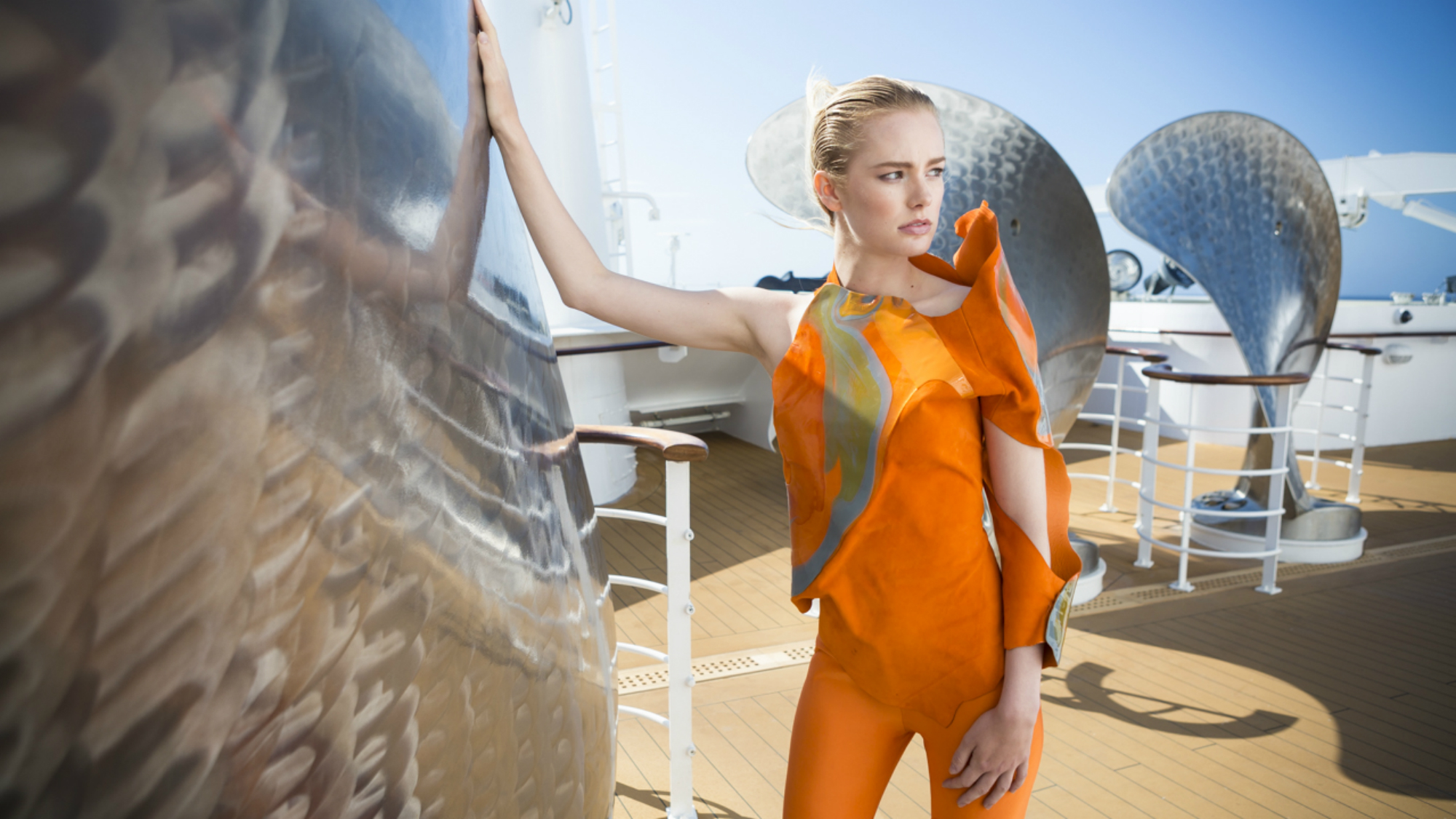
OKSANA ANI
‘My collection is called Fluid Sense and was inspired by a project I worked on at the MIT media lab last year, mixing science with fashion. We created transforming garments and the whole experience blew my mind. I left knowing I wanted to do something crazy. I’ve always worked with colour and print, but I wanted to take it further this time - I wanted the print to come alive and react to the body. I started thinking about the differing temperature of body parts and how they change temperature depending on our feelings. I worked with some Imperial College scientists and we eventually came up with these prints that react to body heat and moisture, moulding into you as you wear them and becoming like a second skin.
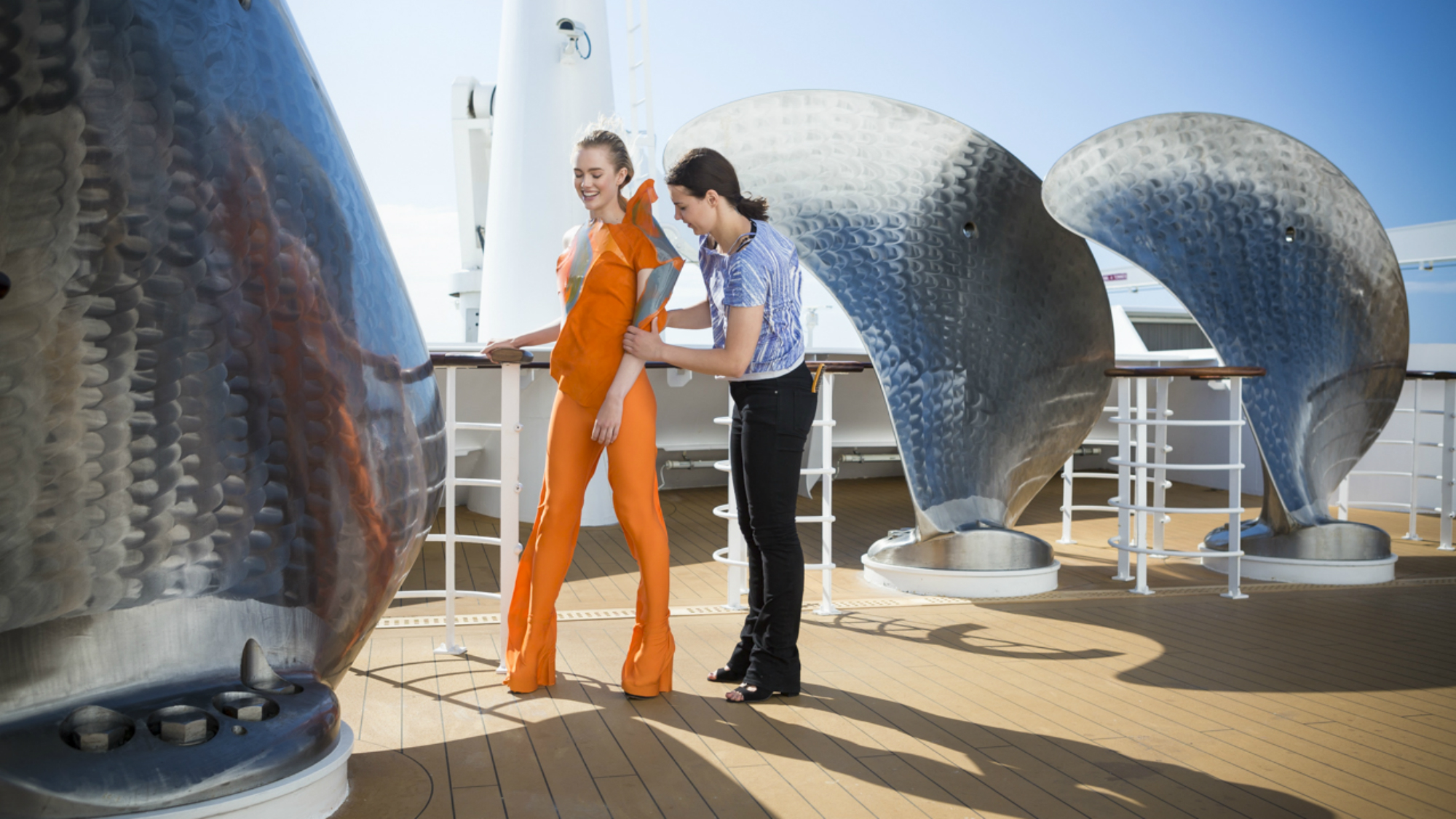
My biggest challenge? The material research. I had to try so many different fabrics to get the right one because I really wanted the material to be responsive - there were a lot of ups and downs. Plus, it was important for me that my collection was not only futuristic, but also wearable. Getting into fashion design happened very naturally. It has always excited me - all the way back to when I was a girl and my mum taught me how to sew simple things for my Barbies. My goal? My experiences with MIT and Microsoft have made me realize that I want to go into fashion research. Research projects really excite me because it's the future - a future that is not just about fashion but science and technology. Fashion is changing and bringing something new and I do believe that’s the future.’

SOPHIE SCHMIDT
‘My collection was inspired by my fascination with light - the contrast between light and darkness, and the spectrum of colours in between. I wanted to incorporate the element of light into my garments, essentially putting technology in a dress. I created garments with a light reflective foil so that the clothes would react and reflect depending on their surrounding space. Whether it’s sunlight or artificial light, when it hits the garment it will reflect a different colour. The research took a while. I started off doing tests by hand with mirrors, experimenting how I could reflect light. It had nothing to do with fashion but more my fascination for light in movement – to me it’s like a little soul that is alive and I wanted to bring that into the collection. My biggest challenge? Aside from the incorporation of light, creating something stiff for the body with such a soft fabric.
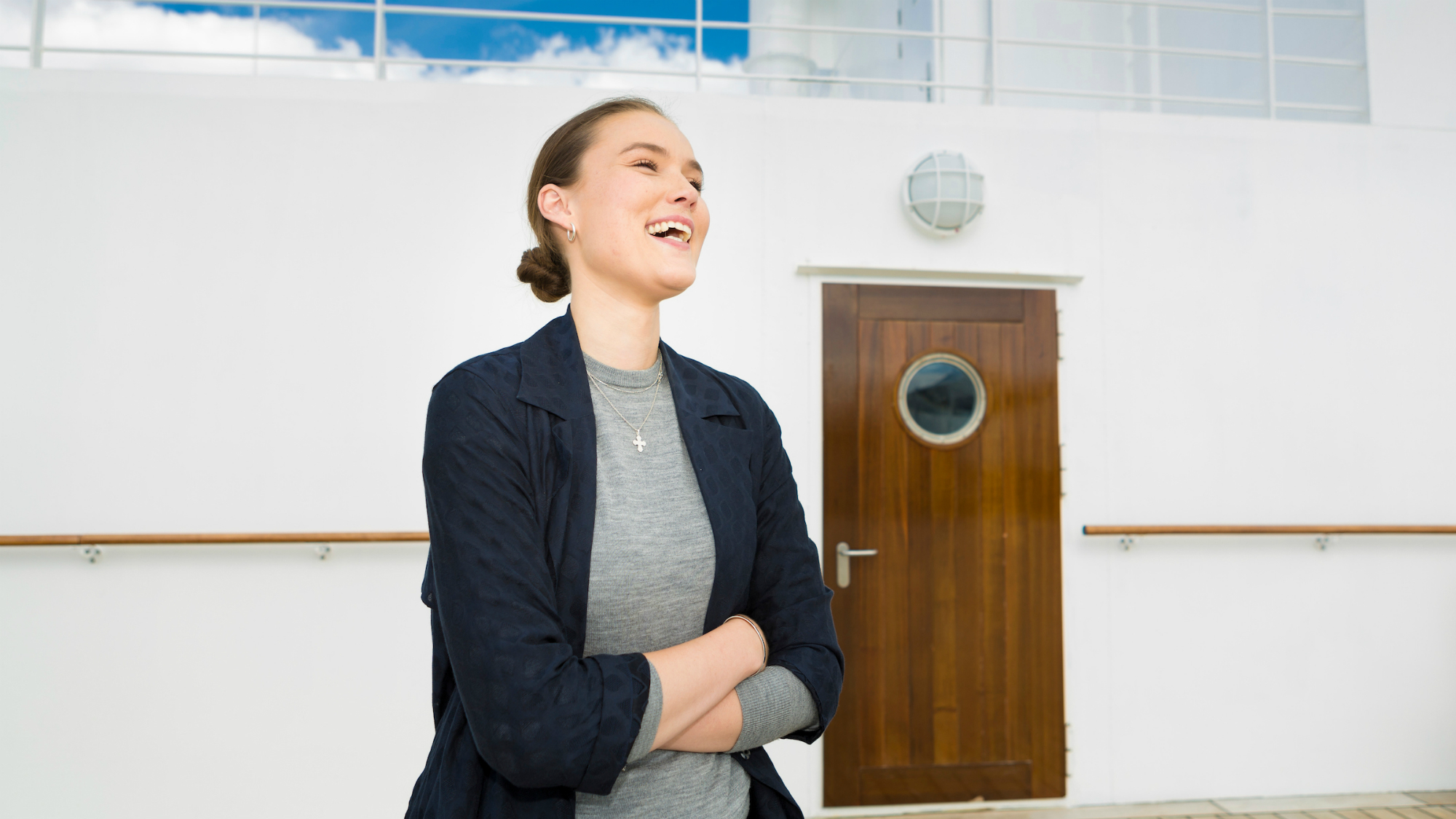
I’ve always been interested in fashion. I grew up in a family of architects so I’ve always liked to build things. I got a sewing machine when I was very young and would tell my father endlessly, “I want to end up at the Royal College of Art”. I don’t really look at trends. For me, a fashion trend is something that you can buy on Oxford Street – something that I follow when I dress myself, but not in my work. I see fashion designers as being more like artists – it’s still fashion but we don’t follow trends. I won’t connect those two worlds. My goal? One day in the future I’d maybe like to do something by myself but for now I want to get some experience in a company and see how the production side of fashion works.’
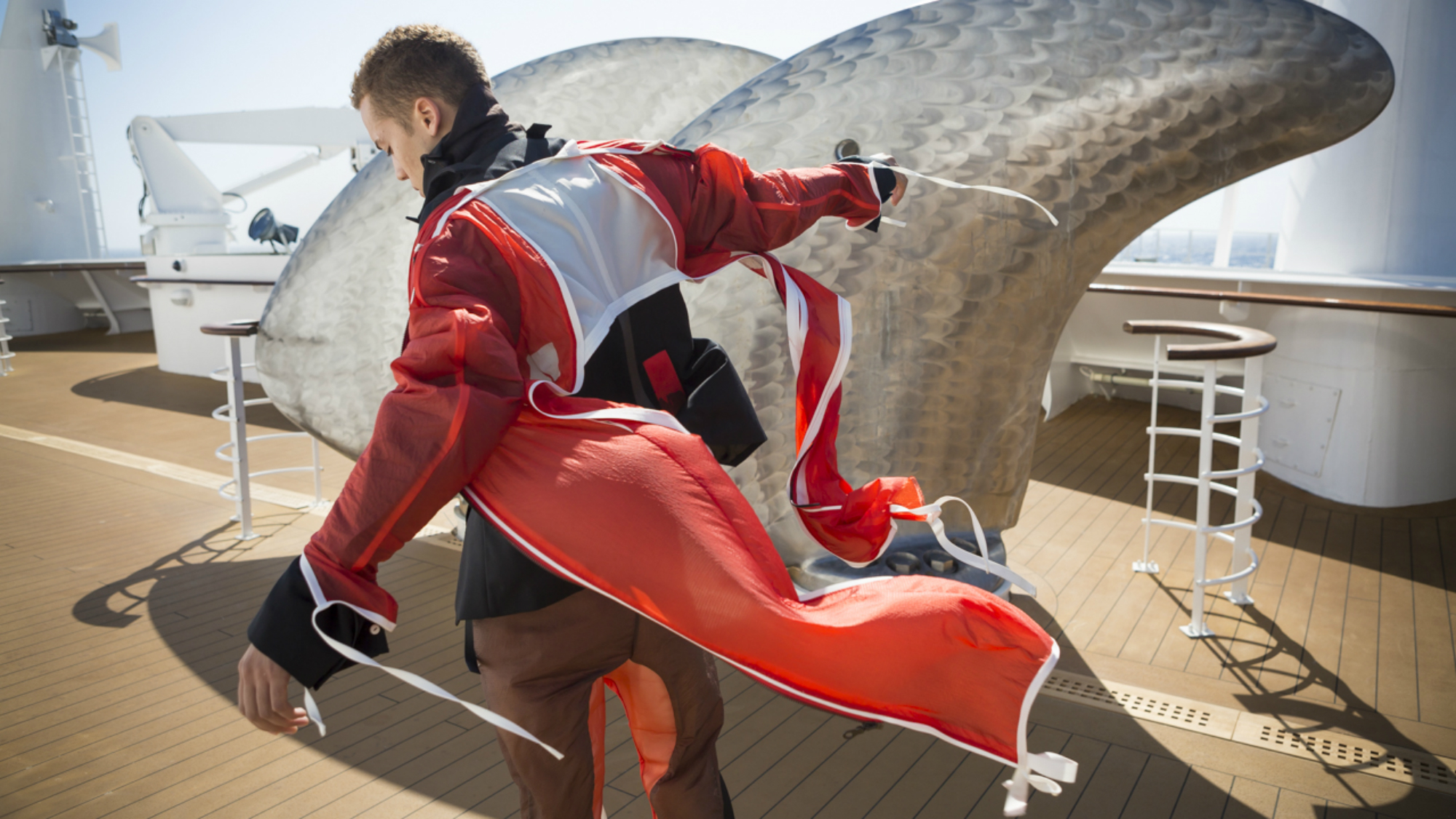
LAETITIA BERTHIER
‘My menswear collection focuses on power. Male fashion is all about giving the perception of power within society and I'm fascinated by how it has changed through history. When women started to gain power for instance, menswear changed dramatically, straying from elaborate and colourful adornments and reverting to serious darker shades to maintain a sense of importance. My pieces are hybrids, celebrating the different influences and incorporating aspects of military, royalty and sportswear fashion. I reused shapes from history like the prominent Victorian-like sleeves, but then I also used fabric from more contemporary fashion, and a lot of wool to reference the suit: a social symbol of power and finance. I was kind of bored in womenswear. I could do nice things but it was never extraordinary. I thought I'd be bored in menswear too, but I actually loved it. Designing for a man, as a woman, is a completely different experience. You're not designing for yourself so you have to be more observant of what he needs, what he likes, what he doesn’t like etc. I prefer that. I’m definitely not against the idea that women could wear my collection too though.
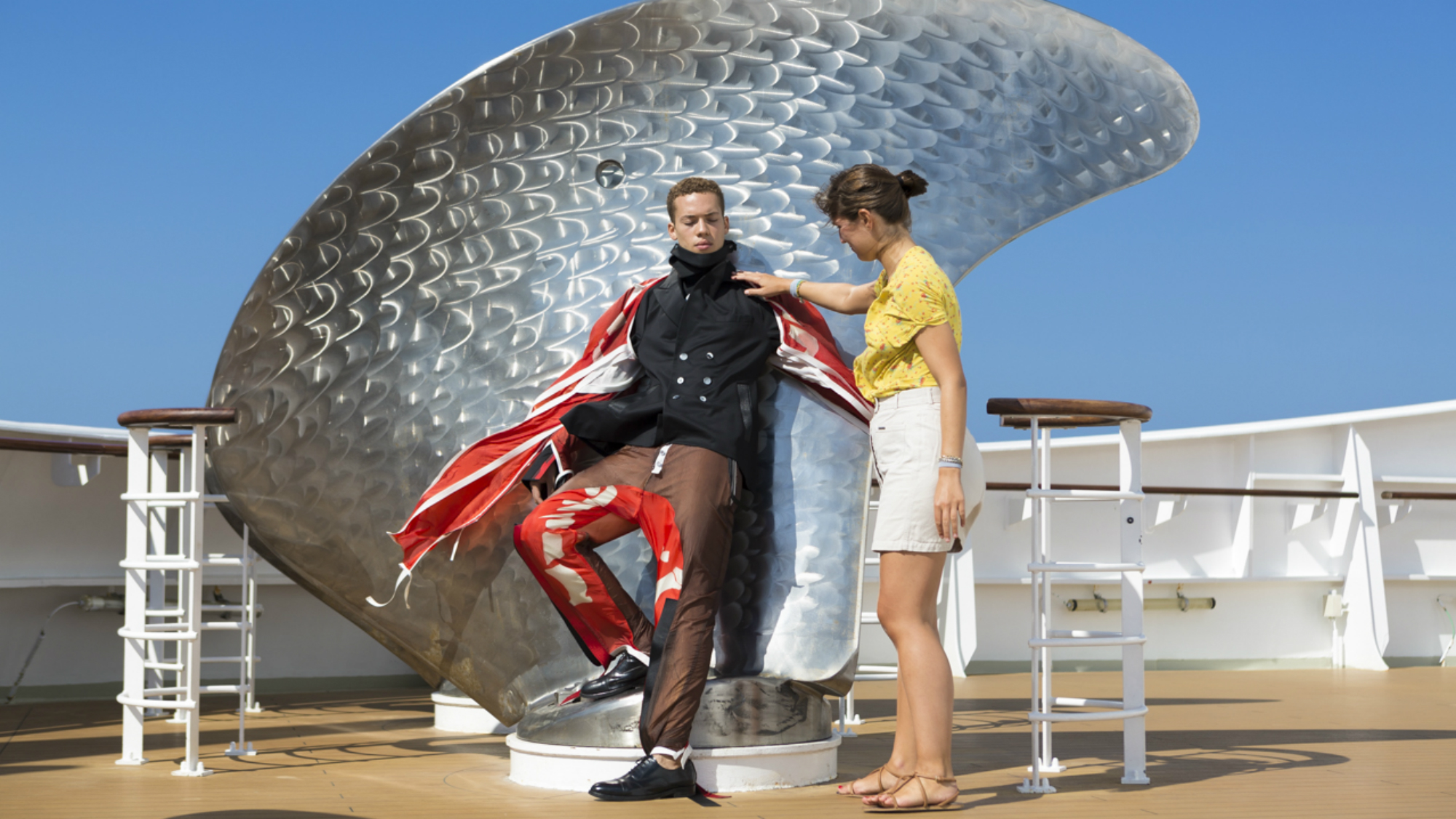
Creating diversity was the hardest challenge. I wanted to attract diverse generations, cultures and different types of men - even women, but it was hard to appeal to everyone without going too far and becoming "costume" fashion. I wanted it to be wearable. I don’t believe in trends. I understand why they exist and I like the fact that things come back without being planned, but they're not for me. My goal? A lot of my friends are in artistic industries (designers, printers, sculptors and curators) so in the long run we would like to build a collective together. For now though, I want to work for a luxury menswear brand to keep learning. I feel that I need to stay within the industry to understand how I can change it.’
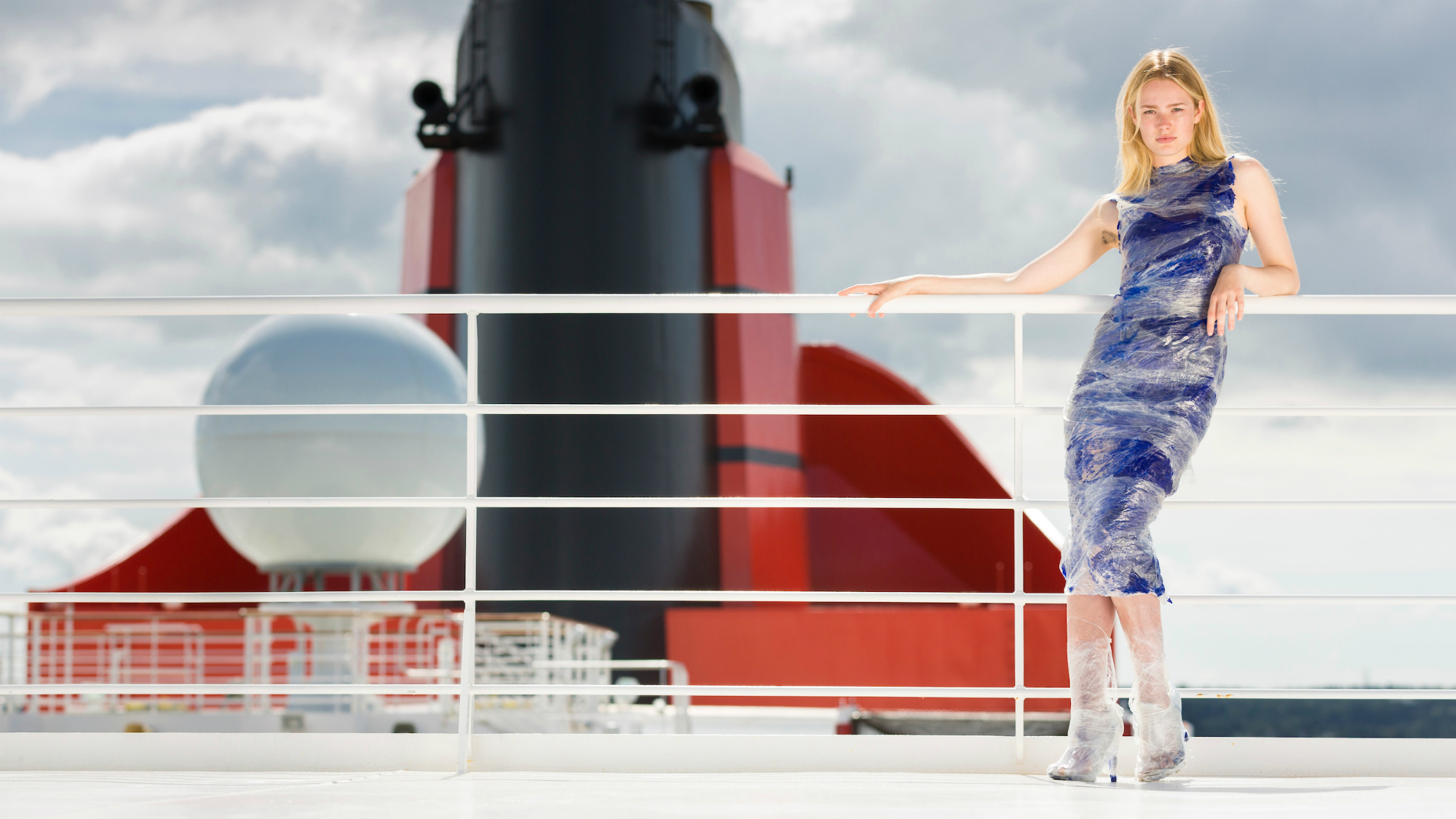
STEFANIE TSCHIRKY
‘My designs are inspired by mathematical theories. I grew up in Switzerland where education is based more on science than anything else and art isn’t considered important. I’ve always had the influence of maths and architecture. I wanted to create the "perfect" dress. By using a golden ratio, I wanted to scientifically create the perfect silhouette and the perfect line on the body. I collaborated with scientists. I had two Imperial PhD maths students and a physics expert on side. Fashion and science are two worlds that don’t often mix so it was a different approach to fashion and we all learnt a lot.
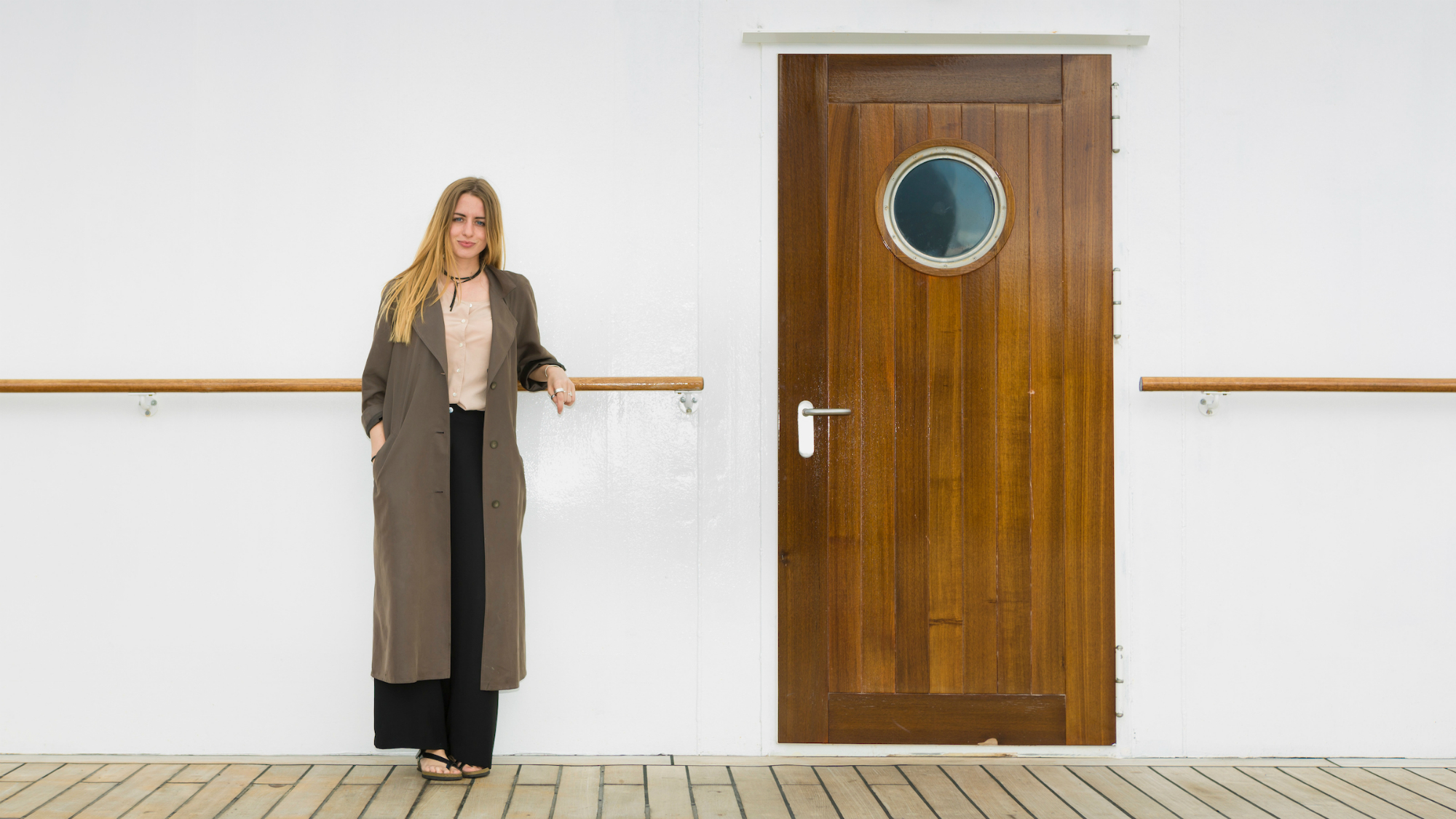
My biggest challenge? Getting the fabric right. I had to double up the fabric and create the mixture myself, it had to be delicate but not so fragile that it would fall apart. I never had any exposure to fashion. I’m from a small village and none of my family are into art or design so I didn’t have anything to do with fashion - I grew up playing in gardens and forests. It was only when I got to primary school that I started changing my clothes, cutting them apart and making something new – I was just creative. My goal? To have a job where I can do what I love and be creative and experimental. I’d like to work for a company and see where it takes me, but If I was given the opportunity at some point I would definitely start my own brand.’
To find out more about Cunard’s Transatlantic Fashion Week 2017, visit cunard.co.uk

Jenny Proudfoot is an award-winning journalist, specialising in lifestyle, culture, entertainment, international development and politics. After working at Marie Claire UK for seven years - rising from intern to Features Editor - she is now a freelance contributor to the News and Features section.
In 2021, Jenny was named as a winner on the PPA's '30 under 30' list, and was also listed as a rising star in journalism.